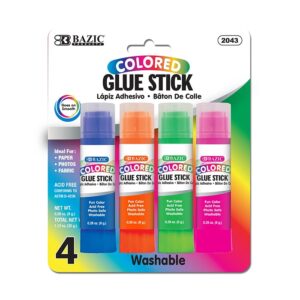The Emergence of “Order Now, Pay Later” in Business Transactions
In the modern business environment, flexibility and strategic financial planning are paramount. The “Order Now, Pay Later” (ONPL) model has progressively become a crucial aspect of commercial transactions, profoundly affecting how businesses manage cash flow and customer relations.
This innovative payment method allows customers to procure goods or services immediately but defer the payment through structured installments.
It’s a win-win for both parties: customers enjoy the financial leeway, and businesses see a boost in sales and customer loyalty due to increased purchasing power.
Crucially, the role of Net 30 vendors is indispensable in this ecosystem. By offering businesses a 30-day credit period, these vendors facilitate the seamless implementation of the ONPL model, allowing businesses to stock up on necessary supplies without upfront payments.
This arrangement not only simplifies inventory and service management but also stabilizes cash flows, which is vital for maintaining business operations and planning future growth.
In this blog post, we uncover the layered dynamics of the ONPL model and how Net 30 vendors catapult its efficiency and accessibility.
Understanding the “Order Now, Pay Later” (ONPL) Model

How ONPL Functions: The Checkout Process and Payment Arrangements
The Order Now, Pay Later (ONPL) model provides a modern approach to financing that aligns with today’s consumer behavior, emphasizing convenience and adaptability.
At the core of ONPL lies a straightforward process:
– The Order Phase: During checkout, instead of paying the full price, the customer opts for ONPL, which allows them to purchase goods or services immediately but delay the full payment.
– Approval and Payment Schedule: Quickly following the order, an ONPL provider or participating business performs a minimal credit check—often a “soft” check that does not impact the customer’s credit score. Upon approval, the terms of payment are set forth, typically stretching over weekly or monthly installments.
– Fulfillment: The customer receives the ordered product or service right away, although payment is deferred, enhancing the immediate gratification that many consumers seek today.
– Repayment: Over the agreed period, the customer makes payments toward the total cost of their order, fulfilling their financial obligation over time without upfront hardship.
This sequence enhances customer experience by offering financial breathing room, yet ensures businesses receive their dues in a predictable fashion.
Key Advantages for Customers: Affordability, Budget Management, and Financial Flexibility
ONPL systems offer multiple customer benefits that make large purchases more manageable and adjust shopping habits to better align with personal budgeting strategies:
– Affordability: By breaking down purchases into smaller, manageable parts, ONPL allows customers to buy items without the immediate financial burden of a lump sum payment.
– Budget Management: Customers can incorporate smaller payment amounts into their monthly budgets, which can help maintain financial stability.
– Financial Flexibility: ONPL provides a way to cope with abrupt or unplanned expenses, enabling customers to acquire necessary or desired goods and services immediately and pay over time.
Differences from Traditional Buy Now, Pay Later Systems
While ONPL and traditional Buy Now, Pay Later (BNPL) systems share similarities, particularly in retail, there are distinct differences mainly seen in the terms of credit checks and flexibility in payment structuring. BNPL often involves rigid, predefined installment plans, while ONPL might offer more negotiable terms based on the customer’s credit profile or purchase history.
Additionally, ONPL is designed to integrate smoothly with Net 30 systems in B2B models, creating synergies that are less prevalent in traditional BNPL setups.
The Role of Net 30 in Business-to-Business (B2B) Commerce
Explanation of Net 30 Terms and Standard Practices
Net 30 terms are prevalent in B2B transactions, offering businesses a 30-day period to pay invoices from the date issued.
This arrangement helps manage cash flows and build strong supplier relationships by:
– Building trust: Timely payments under Net 30 terms can strengthen business relationships and lead to better terms or priority service in the future.
– Enabling revenue generation from resale: Businesses can sell the procured goods before the invoice is due, potentially covering the cost without initial capital outlay.
– Improving financial management: The predictability of payment schedules under Net 30 terms helps businesses plan and allocate funds more efficiently.
Benefits of Net 30 in Trust Building and Revenue Generation
Net 30 facilitates not only efficient cash flow management but also fosters trust and reliability among businesses. This trust is crucial for forming lasting partnerships and can lead to advantages such as volume discounts and priority during product shortages.
Financial Management: Optimizing Cash Flow and Payment Schedules
Effective use of Net 30 terms can substantially optimize a company’s cash flow. By deferring payments, businesses can use the capital for other revenue-generating activities like marketing campaigns, new product launches, or expansion efforts. Additionally, the routine nature of Net 30 allows companies to forecast and manage their payment schedules more predictively, aiding in overall financial planning and stability.
How Net 30 Vendors Facilitate “Order Now, Pay Later” Strategies
Integration of Net 30 Terms with ONPL for Enhanced Business Efficiency
Integrating Net 30 terms within the “Order Now, Pay Later” framework significantly streamlines business transactions and promotes operational efficiency. By utilizing Net 30 vendors, businesses can immediately procure the inventory, supplies, or services they need without upfront payment, leveraging the 30-day credit period to manage their cash flow better.
During this period, businesses can sell their goods to customers on an ONPL basis, collecting payments incrementally. This cycle ensures that businesses can fulfill customer orders effectively while awaiting payment, reducing the burden of significant capital expenditure and managing resources more tactically.
The Cycle: Business Purchases, Customer Sales, and Financial Transactions
The cycle facilitated by Net 30 vendors in an ONPL strategy illustrates a seamless flow of transactions that boost business operations. It begins with a business purchasing products from suppliers under Net 30 terms, allowing them the flexibility to not pay immediately for the goods. The business then sells these products to customers under the ONPL model, where the customer enjoys the benefit of paying over time.
As customers make payments, the business uses these funds to clear their dues with the Net 30 vendor within the stipulated period. This cycle not only ensures smooth financial transactions but also strengthens the supply chain, enhancing overall business sustainability and growth.
Impact on Business: Attracting Customers and Managing Cash Flow
The strategic use of Net 30 vendors in ONPL systems significantly impacts business by attracting more customers and improving cash flow management.
By offering flexible payment options, businesses can cater to a broader market segment, including those who prefer deferred payment schemes. This flexibility often leads to increased customer acquisition and retention. Furthermore, the Net 30 arrangement allows businesses to manage their cash flow more effectively.
They can leverage the period between receiving goods and paying for them to ensure they have sufficient funds aligned with their financial cycles, thus maintaining smooth operational liquidity.
The Benefits of Opting for Net 30 Vendors in ONPL Strategies
Attracting New Customers and Managing Risks
Adopting Net 30 terms in conjunction with ONPL strategies provides dual benefits: expanding customer base and mitigating financial risks. Businesses attract customers by offering the flexibility of “pay later” options, appealing particularly to those who cannot make full payments upfront. Simultaneously, by partnering with Net 30 vendors, businesses can mitigate risks associated with credit management.
Vendors typically handle credit checks and collections, thereby transferring the burden of credit risk from the business to the vendor, allowing the business to focus more on growth and less on financial hazards.
Boosting Sales Through Increased Average Order Values
Utilizing ONPL strategies supported by Net 30 terms can lead to increased average order values. Customers tend to purchase more when given the option to pay over time without the immediate financial burden. This setup not only encourages larger purchases but also enhances the overall revenue without affecting the cash flow negatively, as the payments from customers eventually balance the expenditures to Net 30 vendors.
Competitiveness: Staying Relevant in Evolving Marketplaces
In an increasingly competitive marketplace, the ability to offer flexible payment options is vital. Businesses that employ ONPL models, supported by robust Net 30 vendor relationships, position themselves advantageously against competitors. This adaptability is crucial for staying relevant and appealing to a modern consumer base that values payment flexibility and convenience.
By integrating such systems, businesses not only meet current market demands but also future-proof their operations against evolving consumer preferences and economic shifts.
The CEO Creative: A Case Study in Effective Net 30 Applications
The CEO Creative emerges as a notable example of a successful application of Net 30 terms within the business-to-business sector, making it a pivotal case study for understanding the impact of such financial arrangements on business operations.
As businesses increasingly seek flexible financial solutions to enhance their operational efficiency and customer satisfaction, The CEO Creative provides a model of how Net 30 can be effectively implemented to support growth and client relations in a competitive marketplace.
Advantages of Choosing The CEO Creative for Business Support
Choosing The CEO Creative for business financial support offers numerous advantages. Their streamlined approval process allows businesses of various scales and industries to quickly obtain the necessary credit for operational expansion. This can be particularly beneficial for small to medium enterprises that might not have extensive financial histories.
The CEO Creative’s approach to Net 30 not only facilitates immediate business needs but also fosters long-term growth through:
– Easing Cash Flow Pressures: By allowing businesses a 30-day period to settle invoices, these firms can manage their cash flow more efficiently.
– Building Supplier Relations: Access to The CEO Creative’s extensive vendor network can lead to improved supplier agreements and terms.
– Enhancing Creditworthiness: Regular utilization and timely repayment of Net 30 credit can help businesses build or improve their credit ratings, which is crucial for future financial transactions.
Exploring The CEO Creative’s Extensive Vendor Network and Additional Services
The vast network of vendors associated with The CEO Creative stands out as a significant benefit. This network spans numerous industries, providing businesses with a rich array of products and services essential for their diverse needs.
Additionally, The CEO Creative goes beyond mere financial transactions to offer:
– Business Coaching: Guidance in business strategy and growth is available, which can be instrumental for young companies.
– Innovative Financing Options: Tailored financing solutions that can adapt to the unique challenges and opportunities faced by different businesses.
– Marketing Support: Assistance in developing marketing strategies to enhance market reach and brand visibility.
These offerings demonstrate The CEO Creative’s commitment to not just being a financial intermediary but a holistic business partner.
The Importance of Easy Approval and Top-Tier Customer Support
The CEO Creative simplifies the approval process for their Net 30 accounts, which is invaluable for businesses requiring quick access to resources. This procedural ease is complemented by their top-tier customer support, ensuring any queries or issues are promptly addressed. This level of support ensures that businesses can maximize their use of Net 30 terms without administrative hassle, making it easier to focus on core business activities and growth.
Criteria for Selecting the Right Net 30 Vendor

When considering a Net 30 vendor, several criteria must be evaluated to ensure that the partnership will effectively support the business’s strategic goals. These criteria are essential for maintaining a healthy financial status and supporting operational growth.
Assessing Vendor Approval Rates and Credit Limits
When selecting a Net 30 vendor, businesses should consider the approval rates and the flexibility of the credit limits offered. Higher approval rates and adaptable credit limits can ensure that sufficient funding is available when needed, facilitating uninterrupted operations and the ability to leverage opportunities for growth and expansion.
Importance of Vendor Network Depth and Robust Reporting Tools
The depth of a vendor’s network can significantly impact the value they bring to a business. A substantial network offers more competitive pricing and terms, which can be crucial for cost management and operational efficiency.
Additionally, robust reporting tools provided by the vendor can offer insights into spending patterns and financial commitments, aiding in better financial planning and management.
Considering Value-Added Services and Technology Integration for Growth
Finally, businesses should consider the additional services that a Net 30 vendor offers. Value-added services such as business mentoring, financial consulting, and technology supports can greatly enhance the benefits of a Net 30 agreement. Furthermore, the integration of vendor systems with existing business technology platforms can streamline processes, reduce errors, and save time, further supporting operational efficiency.
By carefully selecting a Net 30 vendor that meets these criteria, businesses can enhance their financial flexibility while fostering growth and operational efficiency, ensuring a competitive edge in their respective markets.
Conclusion: Embracing “Order Now, Pay Later” with the Right Net 30 Partner for Sustainable Business Growth
The “Order Now, Pay Later” (ONPL) model, enhanced by strategic partnerships with Net 30 vendors, holds transformative potential for businesses aiming to adapt to consumer needs while managing cash flow effectively.
By providing customers with flexible payment choices, businesses not only improve customer satisfaction but also stimulate sales growth by making their offerings more financially accessible.
Net 30 terms underpin such strategies by offering businesses the ability to extend credit to their customers indirectly, allowing them to maintain operations without immediate financial reimbursement.
Selecting the right Net 30 vendor is critical; you need a partner that aligns with your operational goals and customer commitment. The perfect match would offer flexible credit, a broad vendor network, and additional resources geared towards business development.
Ultimately, integrating ONPL and Net 30 vendors effectively can significantly elevate a company’s competitive edge and financial health. This model not only familiarizes companies with modern consumer preferences for payment flexibility but also prepares them to thrive in a rapidly changing economic landscape. Embracing this strategy with the right partner not only drives growth but also supports sustainable business practices that can lead to long-term success.






